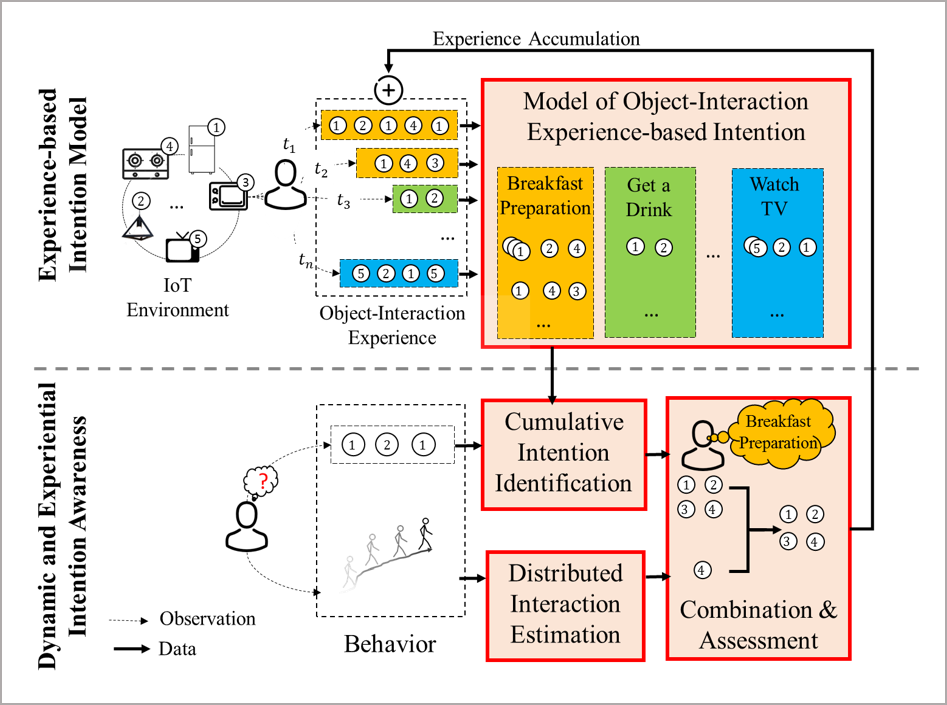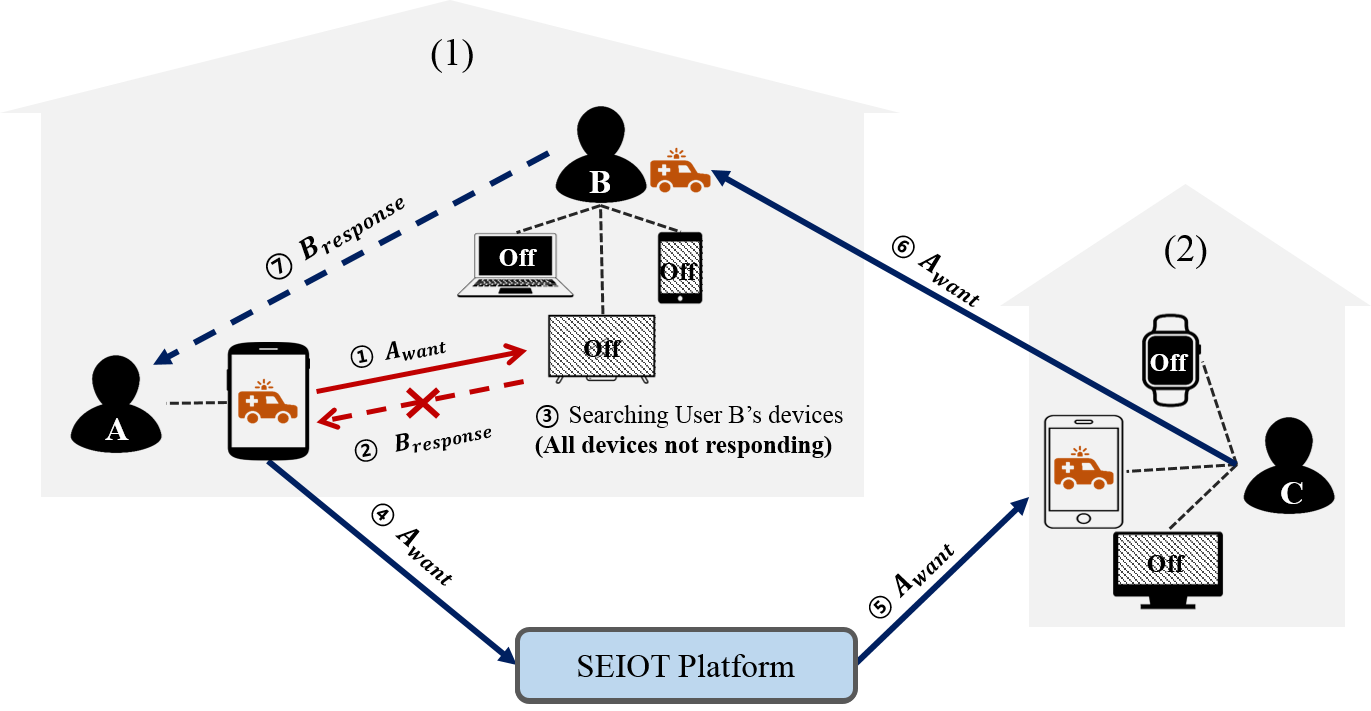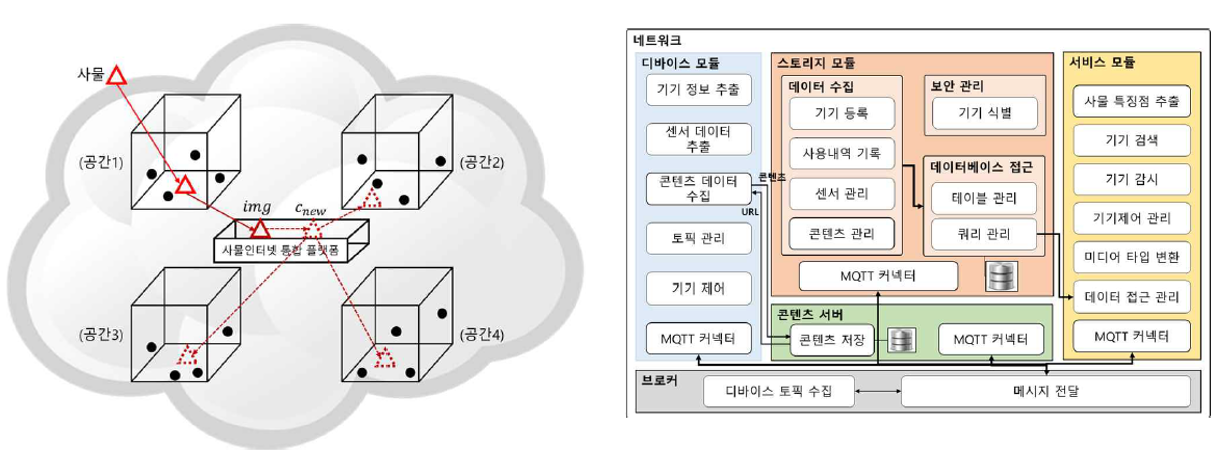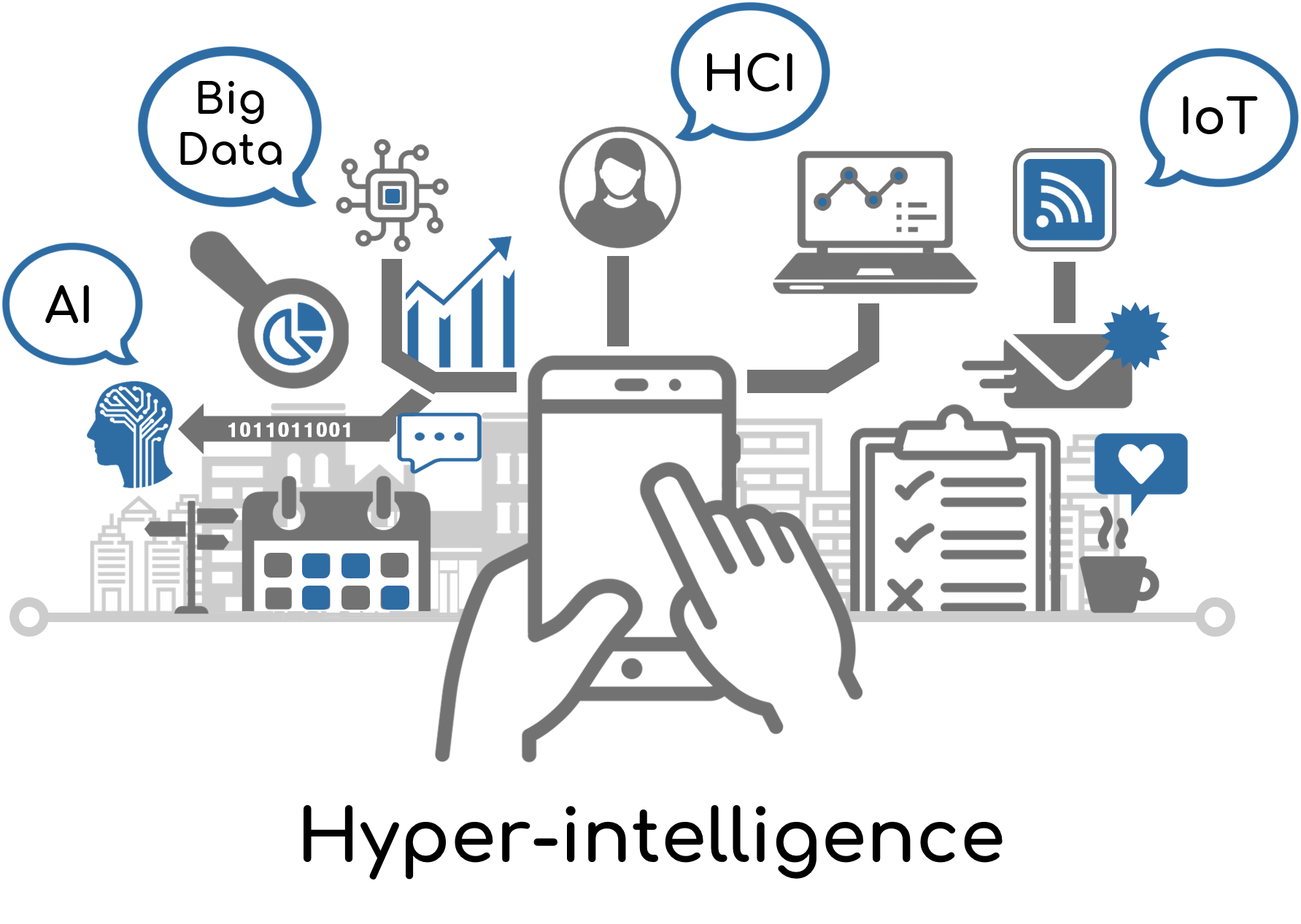Through the internet, people connect with people, things, even objects, and so on. With other 2 billions worldwide people connected to the internet, the number of digital devices has surpassed the worldwide population for many years. Internet is open 24 hours a day, and it is no longer strange to see multiple information through various devices, people, objects, and space. All the things entered the hyper-connected society which is communicates through the internet.
Hyper-connected intelligence means that all the things such as people, objects, and space are connected to each other on the internet and information about everything is generated, collected, shared and utilized. New life is given to all objects and spaces, and communication opens new society. In the hyper-connected society, not only human-to-human, but also objects such as devices and objects can communicate with each other based on the network. Above all, the development of technologies such as Internet of Things(IoT), Artificial intelligence(AI), and Big data makes it possible to provide intelligent and innovative services in various field. |

- Artificial Intelligence
Artificial intelligence (AI), sometimes called machine intelligence, is intelligence demonstrated by machines, in contrast to the natural intelligence displayed by humans and other animals. In computer science AI research is defined as the study of "intelligent agents": any device that perceives its environment and takes actions that maximize its chance of successfully achieving its goals. Colloquially, the term "artificial intelligence" is applied when a machine mimics "cognitive" functions that humans associate with other human minds, such as "learning" and "problem solving".
- Intention Awareness and Experience
Intention awareness is significant and meaningful. Humans needs intention awareness for communications, co-work, and etc., and computer needs for collaboration, implicit interactions and etc. Also, intention awareness is an essential part of IoT because heterogeneous devices and services needs intelligence with minimal human intervention and invisible interaction is necessary. Previous solution has some limitations. State-based approaches are high computational complexity and feature-based approaches: manual feature construction.

- Big Data
Big data is data sets that are so big and complex that traditional data-processing application software are inadequate to deal with them. Big data challenges include capturing data, data storage, data analysis, search, sharing, transfer, visualization, querying, updating, information privacy and data source. There are a number of concepts associated with big data: originally there were 3 concepts volume, variety, velocity. Other concepts later attributed with big data are veracity (i.e., how much noise is in the data) and value.
- Application
Smartfarm refers to an intelligent farm that can control and manage crops and livestock growth environment remotely and automatically by integrating ICT in agriculture. Smartfarm can check and control the environment of greenhouses, barns, etc. Anytime and anywhere through a smartphone or PC. In addition, by minimizing labor and energy, agricultural competitiveness can be enhanced and productivity and quality of agricultural products can be expected.

- Human Computer Interaction
Human–computer interaction (HCI) researches the design and use of computer technology, focused on the interfaces between people (users) and computers. Researchers in the field of HCI both observe the ways in which humans interact with computers and design technologies that let humans interact with computers in novel ways. As a field of research, human–computer interaction is situated at the intersection of computer science, behavioral sciences, design, media studies, and several other fields of study.
- Context-awareness for Unresponsive User in the IoT Environment
With the development of the Internet of Things(IoT), there is an increasing number of researches to aware the context and provide services automatically using the Internet of Things devices in the user environment. The Internet of Things based context awareness method can be applied to many situations such as disasters and emergencies. It uses various devices in the user environment, for example, home appliances, mobile devices, and sensors, to infer contextual information and provide appropriate services. However, if there is no response due to the user’s unconscious, system should search for other users in the vicinity and send the context information or service instead. For instance, in an emergency where there is unconsciousness of the user, the system can contact or promptly respond to other agencies or users nearby. Recently, these problems have emphasized the importance of convergence Internet of Things and social networks. Researches on IoT social networks has been promising to provide new services by converging the Internet of Things and social networks.

- Internet of Things
The Internet of Things (IoT) is the Internet extended into the physical world. Its function is to collect data and transform it into useful information. Its purpose is to improve products, services and companies by creating value, generally through innovation, operational efficiency, asset utilization and invention. It is the basis of digital transformation when applied to the products, services and operations of physically-based companies. Vehicles, appliances, buildings, equipment, factories, machinery and other physical devices are embedded with electronics, software, sensors, actuators, and connectivity to collect and exchange data. Data is transformed into value with data analytics and artificial intelligence (AI) / machine learning (ML).
- Platform of Internet of Things
Internet of things platform is to connect with any IoT devices and applications to relay information using internet transfer protocols. The gap between the device sensors and data networks is filled by an IoT platform. Such a platform connects the data network to the sensor arrangement and provides insights using backend applications to make sense of plethora of data of data generated by hundreds of sensors.
- Real-time and Intelligent Interaction on IoT
With the development of the Internet of Things (IoT), various kinds of IoT devices are being developed. As a result, the types of the platforms for managing a large number of devices are also increasing. we developed an IoT integration platform to collect and manage data from heterogeneous devices. The existing IoT platforms collect data about simple sensors, but the developed platform collects data in terms of video. For this reason, a content server for managing large capacity video data was designed and developed. More specifically, this platform can extract data from videos and share it by interacting with other devices.
|
 Overview
Overview
 Research Area
Research Area





